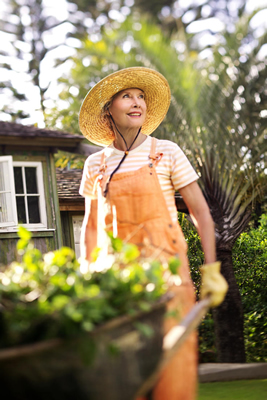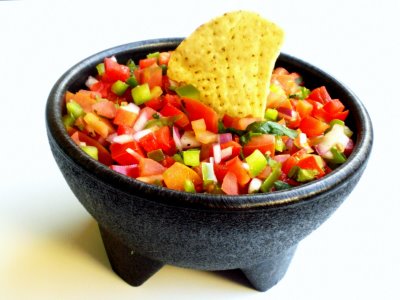|
|
 |  | How Do I Make Sure
My Fertilizer Has 50% Slow-Release Nitrogen?
Fertilizer labels always list nitrogen first among the three numbers on the bag. They also are required to list how much of the nitrogen is in water-insoluble, or slow release, form.
Look for these terms on the label:
- Timed-release, slow-release, or controlled-release.
- Water insoluble nitrogen, activated sludge, sulfur-coated urea (SCU), IBDU, ureaform (UF), nitroform, or polymer-, plastic-, or resin-coated urea.
To calculate the percent of slow-release nitrogen, divide the total nitrogen listed on the bag by the percent water-insoluble nitrogen, and multiply by 100.
Example
If you have a bag of 10-0-10 fertilizer, with the 3 numbers representing Nitrogen, Phosphorous and Potassium in order, and 5% of the nitrogen is in water-insoluble form, here is what you get:
5 ÷ 10 = .5 x 100 = 50
This bag contains 50% slow release nitrogen.
**Pinellas County residents: All fertilizers sold from October-May must be 50% slow-release nitrogen, so need for you to crunch any numbers.
Click here for a list of ordinance- compliant fertilizer products
|
|
 |
 | |
Pam Brown
Pampered Gardeners
|
| |
Pam Brown of Pampered Gardeners is a personal gardening coach and an expert on gardening in Florida's hot, humid climate. She offers hands-on training to provide you with the knowledge and skills necessary to successfully plan, develop, and maintain your personal outdoor spaces. Pam's commitment to environmentally friendly gardening makes her a natural Be Floridian partner.
Click here to contact Pam Brown
|
|
 | SPRING PLANT FAIR
April 14-15
Saturday 10 am - 4 pm
Sunday 10 a.m. - 3 pm
USF Botanical Gardens
Tampa, FL
April 14
9 am - 4 pm
Florida Native Plant Society
Wilcox Nursery
12501 Indian Rocks Road
Largo, FL
April 28-29
9 am to 4 pm
Walter Fuller Park
7891 26th Ave. N.
St. Petersburg, FL
|
|
| 
Like us on Facebook
|
|
 |  | |
Classes and workshops offer free or cheap instruction on how to save time and money by practicing Florida-Friendly Landscaping™ principles. Check out your county extension service to get started or to learn advanced skills.
|
|
 | |
LINKS WE LIKE Be Floridian Univ. of Florida/Florida-Friendly Landscaping™ Program
Floridata Plant Profiles
floridata.com
Tampa Bay Estuary Program
tbep.org
Sarasota Bay Estuary Program
sarasotabay.org
|
|
|
|
|
Introducing the
Protect Fun Newsletter
Welcome to the inaugural Be Floridian e-newsletter. Every two months, we'll bring you news about our regional Fertilizer Education campaign and our roving flock of pink yard flamingo ambassadors, along with simple tips to help you create a yard that works with Florida's quirky, challenging climate. We want you to spend less time mowing, fertilizing and weeding, and more time enjoying the beautiful waters that are the main reason most of us moved here in the first place. That's why we call it Protecting Our Fun!
You are receiving this e-newsletter because you indicated on our website survey that it would be OK for us to provide you with more info about landscaping for True Floridians. Don't want to hear from us again? No need for ruffled feathers. Just click "Safe Unsubscribe" at the bottom of this newsletter and we won't land in your inbox anymore.
|
|
Be Floridian This Spring
If you're planning to fertilize your lawn or flower beds this Spring, take it slow -- as in slow-release nitrogen.
 Slow-release products (also called controlled release or timed release) feed your lawn or plants gradually, nourishing them for a longer period of time. Only fertilizers containing a minimum of 50% slow-release nitrogen should be used from October-May. They help keep our environment healthy, since they are more likely to be absorbed by the plants and less likely to run off your yard when it rains and pollute our bays, rivers, lakes and the Gulf of Mexico. Slow-release products (also called controlled release or timed release) feed your lawn or plants gradually, nourishing them for a longer period of time. Only fertilizers containing a minimum of 50% slow-release nitrogen should be used from October-May. They help keep our environment healthy, since they are more likely to be absorbed by the plants and less likely to run off your yard when it rains and pollute our bays, rivers, lakes and the Gulf of Mexico.
Look for products with no phosphorus, too -- our soils contain abundant amounts of phosphorous, so no need to apply more!
Even with slow-release products, you still need to be careful not to apply too much fertilizer. Knowing how big your yard is will make sure you give your plants the nutrition they need, without wasting your money or polluting our waters. Calculate the right amount of fertilizer for your yard by clicking here.
Here are more some more tips to help you maintain your yard like a True Floridian this Spring:
- Avoid weed and feed products, and be sure to sweep up any fertilizer spills from hard surfaces to prevent them from running off into our waters.
- Never fertilize before or during a heavy rainfall. Rains don't water fertilizer in, they wash it away. Instead, apply fertilizer on your regular watering day and apply 1/4-inch of water. This will put the nutrients at the roots of the plants where they can be absorbed most readily.
- Water wisely. Spring is typically a dry time in central Florida, so remember to adjust your irrigation schedule based on current rainfall totals. Most landscape plants require 1/2"-3/4" of water each week. If you have an automatic irrigation system make sure you have a working rain sensor, or use a rain gauge to adjust your watering practices.
- Add 2-3 inches of mulch to hold in soil moisture during dry spring months and help keep weeds out. Choose eco-friendly mulches like pine straw, pine bark or eucalyptus chips. Don't bag those leaves that fall from your oak trees; use them as mulch instead. They're free!
- Prune spring flowering trees and shrubs after blooming. Prune after the last flowers fade but before new buds set in mid to late summer.
- Always remember to sweep grass clippings, leaves, and other landscape debris off of hard surfaces like sidewalks, driveways, and roads to prevent them from making their way to our storm drains, and then on to your waterways.
- Spring is a perfect time to embark on a Florida-friendly yard makeover. Ease into your makeover by removing a section of high-maintenance grass and replacing it with a mulched bed of drought-tolerant, easy-care flowers, shrubs or groundcovers. Learn more and see examples of what you can do at www.floridayards.org
|
|
Plants for True Floridians
Florida Native
 | | Firebush |
Firebush blossoms with tubular red-orange flowers, making it attractive to hummingbirds and butterflies, especially zebra longwings and Gulf fritillaries. It's often called a hummingbird bush. An evergreen shrub, Firebush can grow from 2 to 15 feet in height, and thrives in full sun or partial shade. Once established, it's drought tolerant. Firebush can die back to the ground in cold weather, but usually pops right back up in the Spring.
To learn more about Firebush, click here
Florida Friendly/Non-Native
 | | Cosmos |
Sunny cosmos is another butterfly attractor. It comes in shades of yellow, orange, pink, purple, red and white. Also called Mexican aster, cosmos is easy to grow and prefers well-drained sandy soil and bright sunlight. It will reach anywhere from 1 to 7 feet in height, and is perfect for beds and borders. This rugged flower can beat the heat and survive drought conditions.
To learn more about cosmos, click here
|

| |
Going Native With Your HOA
| |
No need to lose your cool if you live in a deed-restricted community and want to convert to a Florida-Friendly yard. Yes, you CAN modify your landscape -- but you have to be patient and positive! This short video featuring Be Floridian partner Pam Brown will help you start the conversation with your HOA board and give you valuable tips to help you succeed.
|
|
Recipes for Relaxing
| |
Less fertilizing, mowing and weeding means more time to kick back and relax. We like to snack on tortilla chips with fresh homemade salsa while sitting on the deck admiring our Florida-Friendly Yard. Grab some ripe tomatoes and cilantro from your backyard garden to create this healthy snack
Fresh Tomato Salsa 3 tomatoes, chopped 1/2 cup finely diced onion 5 serrano chiles, finely chopped 1/2 cup chopped fresh cilantro 1 teaspoon salt 2 teaspoons lime juice In a medium bowl, stir together tomatoes, onion, chili peppers, cilantro, salt, and lime juice. Chill for one hour in the refrigerator before serving. Enjoy! |
|
|
|
 |
What's Be Floridian?
Be Floridian is an educational campaign sponsored by the Tampa Bay Estuary Program. Our partners include Hillsborough, Manatee, Pinellas, and Sarasota counties; the cities of Clearwater, St. Petersburg and Tampa; and a variety of landscape designers, gardening coaches, fertilizer companies and lawn care specialists. We are calling on all Sunshine Staters to help protect what makes Florida so fun -- our bays, lakes, rivers and the Gulf of Mexico -- by skipping the fertilizer in the summer to prevent water pollution.
|
|
|
|
|